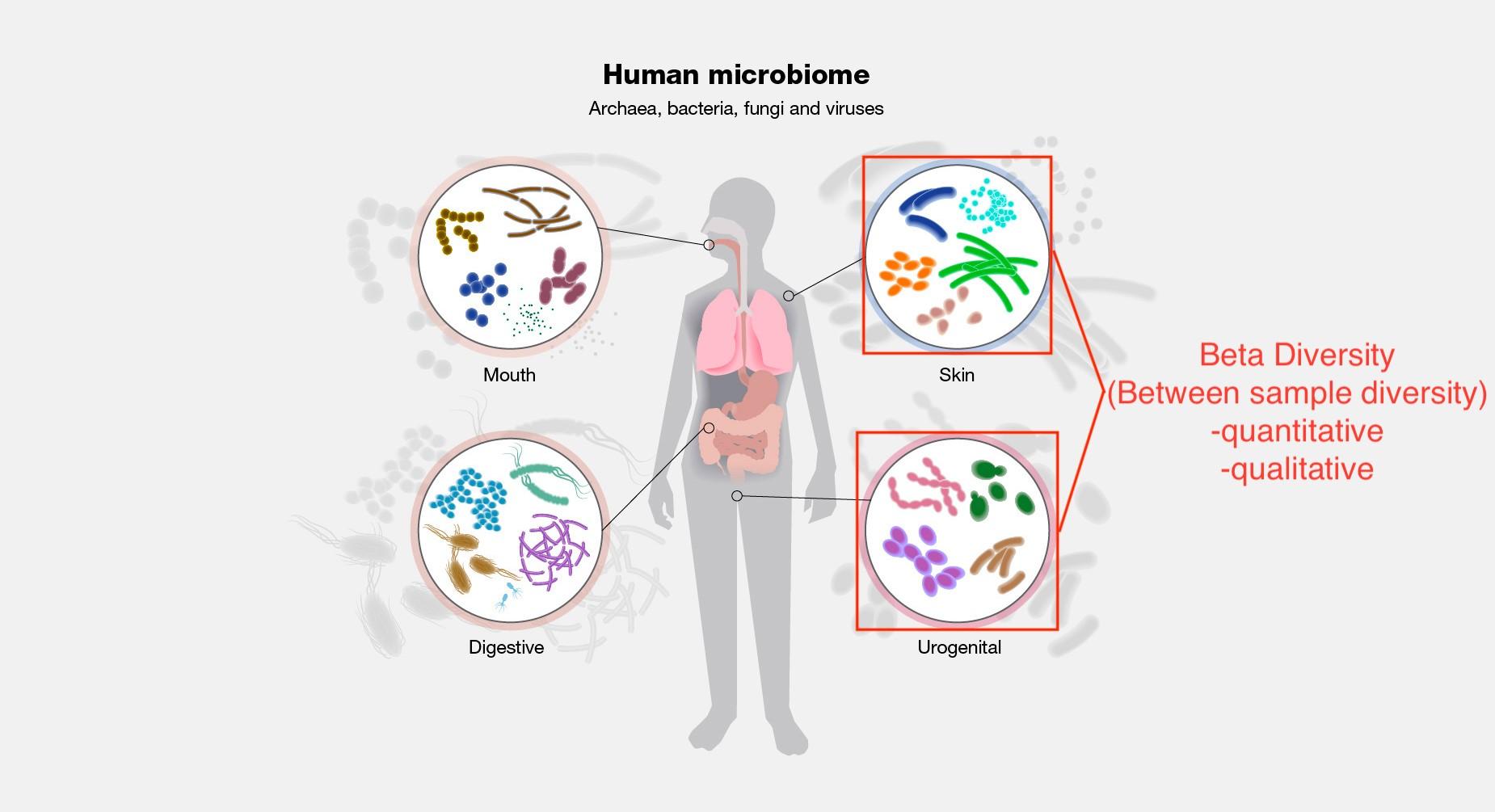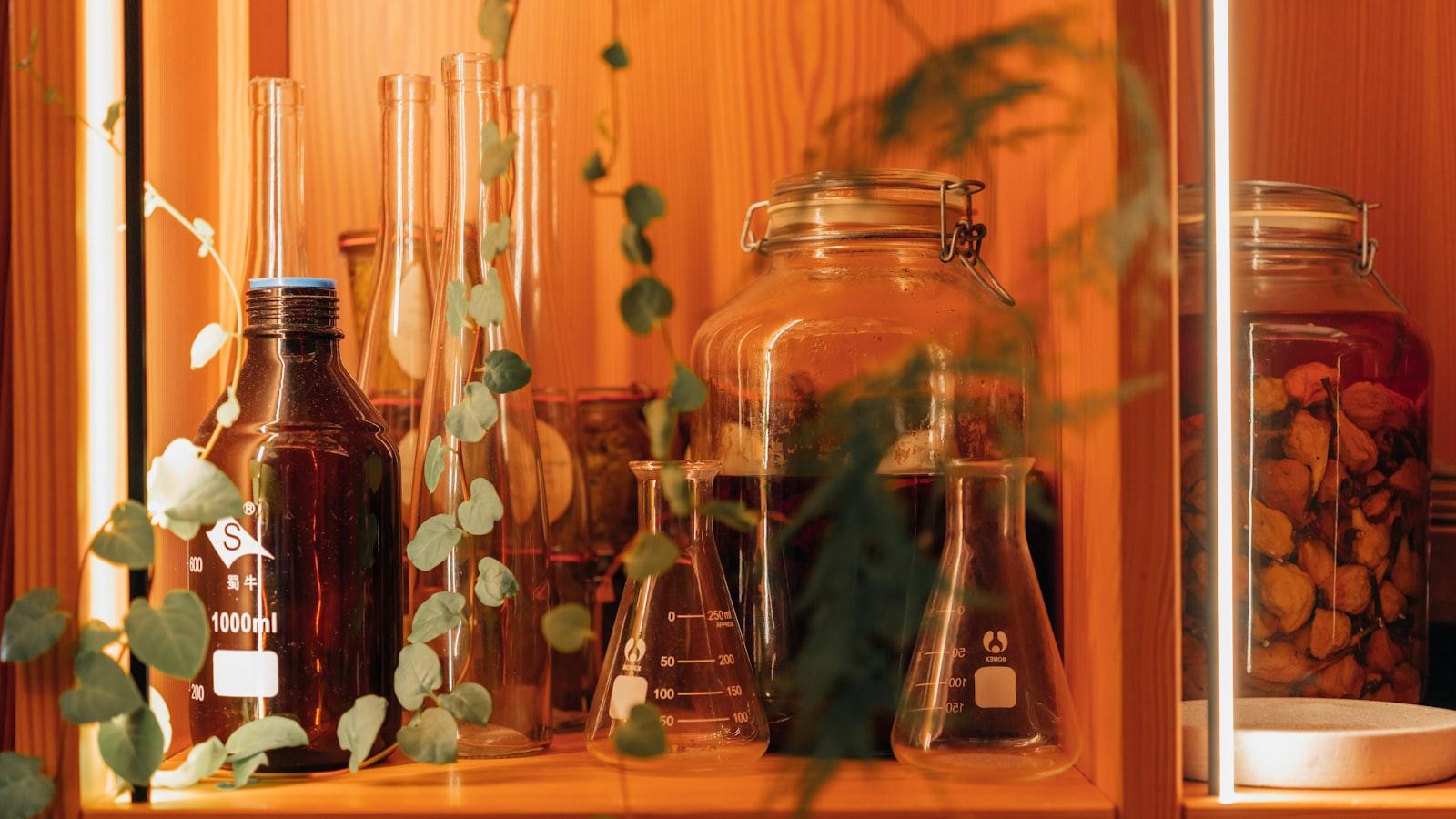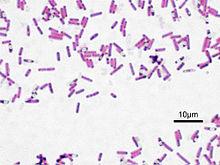In the intricate tapestry of traditional cuisines across the globe, fermented foods hold a unique place, weaving together the threads of cultural heritage and microbiological innovation. Among these, fermented bamboo shoots, a delicacy cherished in various parts of Asia, exemplify the harmonious interaction between human culinary practice and the microbial world. The molecular diversity of microbes associated with fermented bamboo shoots is a captivating area of study, revealing not just the complexity of microbial communities but also their pivotal role in shaping the sensory attributes and nutritional value of these fermented foods. This exploration unravels the microbial consortia that ferment bamboo shoots, shedding light on their composition, dynamics, and the biochemical pathways they employ. Understanding these microbial ecosystems not only enriches our appreciation of traditional fermentation processes but also opens avenues for enhancing food preservation, safety, and nutritional quality in a natural and sustainable manner. This article delves into the vibrant world of microbes that orchestrate the fermentation of bamboo shoots, providing insights into the potential they hold for culinary innovation and food science.
Table of Contents
- Exploring the Molecular Diversity of Microbes in Fermented Bamboo Shoots
- The Role of Specific Microbial Communities in Fermentation Processes
- Impact of Microbial Diversity on Nutritional and Sensory Properties
- Recommendations for Enhancing Fermentation Quality through Microbial Management
- Q&A
- In Summary

Exploring the Molecular Diversity of Microbes in Fermented Bamboo Shoots
The complex ecosystem of fermented bamboo shoots opens up a fascinating world of microscopic life, teeming with an array of bacteria, yeasts, and molds. These microorganisms play a pivotal role in fermentation, a natural process that not only enhances the flavor and texture but also increases the nutritional value of bamboo shoots. Studies reveal that the microbial composition is highly diverse, including species such as Lactobacillus, Bacillus, Saccharomyces, and Aspergillus. This diversity is influenced by factors such as the type of bamboo, geographical location, and fermentation methods employed, resulting in a unique microbial signature for each batch of fermented bamboo shoots.
Beyond merely contributing to the sensory qualities of the food, these microbes wield significant health benefits. For instance, Lactobacillus species are renowned for their probiotic properties, aiding in digestion and bolstering the immune system. The presence of beneficial yeasts and molds further complicates the microbial landscape, introducing enzymes and compounds that can detoxify harmful substances and inhibit the growth of pathogenic bacteria. To systematically understand this microbial diversity, researchers employ cutting-edge molecular techniques such as DNA sequencing and metabolomic analysis, aiming to map out the microbial communities and their functional attributes.
| Microbe Type | Common Species | Functional Attributes |
|---|---|---|
| Bacteria | Lactobacillus, Bacillus | Probiotic benefits, enhances flavor and preservation |
| Yeasts | Saccharomyces | Fermentation, flavor enhancement |
| Molds | Aspergillus | Contributes to biochemical transformations |

The Role of Specific Microbial Communities in Fermentation Processes
In the intricate dance of fermentation, specific microbial communities play pivotal roles, transforming raw materials into flavorsome and nutritionally enhanced foods. Within the context of fermented bamboo shoots, the molecular diversity of microbes orchestrates a complex bioconversion process, where carbohydrates are transmuted into organic acids, alcohols, and aromatic compounds. This microbial alchemy not only preserves the bamboo shoots but also enriches them with health-promoting properties, including probiotics, enhanced digestibility, and an increase in bioactive compounds.
Investigations into the microbial landscape of fermented bamboo shoots unveil a rich tapestry of bacterial and yeast species. Primary among these are Lactobacillus, known for its fermentation prowess, and Saccharomyces, a yeast genus pivotal in alcohol and bread production. Understanding the roles and interactions of these microorganisms is crucial for optimizing fermentation processes and tailoring them to yield products with desirable flavors, textures, and nutritional profiles. Below is a simplified table showcasing some of the dominant microbes involved in fermented bamboo shoots and their key contributions:
| Microbe | Role in Fermentation | Beneficial Contribution |
|---|---|---|
| Lactobacillus | Lactic acid fermentation | Preservation, probiotics, flavor |
| Saccharomyces | Alcoholic fermentation | Alcohol production, flavor enhancement |
| Aspergillus | Saccharification | Enhances digestibility, nutritional upgrade |
Delving deeper into the microbial diversity and understanding their specific contributions enables not only the preservation of traditional fermentation practices but also paves the way for novel food innovations. This microbial mastery, when harnessed effectively, can significantly impact food technology, offering avenues for sustainable food practices, waste reduction, and the creation of gastronomical delights that cater to the evolving palate of the modern consumer.

Impact of Microbial Diversity on Nutritional and Sensory Properties
The intricate dance between microbial diversity and its effects on the nutritional and sensory qualities of food cannot be overstated, particularly in the context of fermented bamboo shoots. These shoots, revered in many cultures for their crisp texture and unique flavor, owe much of their culinary value to the teeming microscopic life within. It’s this microbial tapestry that orchestrates the transformation of raw bamboo into a product enriched not only in flavors but also in essential nutrients. The fermentation process, driven by a complex consortium of bacteria and fungi, engenders a cascade of biochemical reactions, breaking down complex carbohydrates, proteins, and fats into simpler, more digestible forms. This not only enhances the bioavailability of nutrients such as amino acids, vitamins, and minerals but also introduces novel compounds instrumental in the sensory profile of fermented bamboo shoots.
Understanding the molecular diversity of microbes associated with bamboo shoot fermentation illuminates the pathway to optimizing both the healthful aspects and the sensory appeal of these products. For instance, lactic acid bacteria (LAB), a predominant group in the microbial community of fermented bamboo shoots, are known for their probiotic potential. These beneficial microbes contribute to gut health, compete with pathogens, and can modulate the immune system. Beyond health impacts, the flavor profile of fermented bamboo shoots – ranging from mildly sour to intensely umami – is a direct reflection of microbial activity. Metabolites produced by these microbes, such as organic acids, alcohols, and esters, play pivotal roles in crafting the unique taste and aroma characteristics of the final product. The table below highlights the key microbial players and their contribution to both nutritional and sensory properties:
| Microbe Type | Nutritional Contribution | Sensory Impact |
|---|---|---|
| Lactic Acid Bacteria | Probiotics, enhanced nutrient bioavailability | Sour taste, improved texture |
| Yeasts | Production of B vitamins | Alcoholic notes, aroma complexity |
| Molds | Enzymatic degradation of anti-nutritional factors | Umami flavor, texture modification |
The depth and breadth of microbial involvement in bamboo shoot fermentation lay the groundwork for further research and innovation in food science. By teasing apart the complex interactions between these microbial communities and their environment, we can tailor fermentation processes not just for optimal health benefits and sensory qualities but also for consistency and safety. As such, fermented bamboo shoots stand as a testament to the power of microbial diversity in shaping the foods that enrich our diets and delight our palates.

Recommendations for Enhancing Fermentation Quality through Microbial Management
The cornerstone of any high-quality fermented product lies in the unseen but powerfully influential world of microbes. It’s not just about having any microbial presence, but the right kind in the right balance. For fermented bamboo shoots, a delicacy celebrated in various cultures for its unique flavor and nutritional benefits, this balance is pivotal. Enhancing fermentation quality through microbial management begins with identifying and promoting beneficial microbes while curbing the growth of adverse ones. Key recommendations include:
-
- Regular Monitoring: Implementing systematic checks of microbial populations during fermentation. This can be achieved through molecular fingerprinting techniques which offer a window into the microbial community’s dynamics, allowing for timely adjustments.
-
- Optimized Starter Cultures: Developing and utilizing starter cultures that are tailored to the specific needs of bamboo shoot fermentation. These cultures should harbor strains that not only enhance flavor and nutritional value but also outcompete undesirable microbes.
-
- pH Management: Keeping a close eye on the pH levels throughout the process. An ideal pH range encourages beneficial microbes to thrive while inhibiting spoilage-causing bacteria.
-
- Sanitation Practices: Ensuring all equipment and storage facilities are sanitized effectively to prevent the introduction of harmful microorganisms. A clean fermentation environment is fundamental for quality.
To further illuminate the importance of microbial diversity in fermented bamboo shoots, the following table outlines the contrast between beneficial microbes typically associated with optimal fermentation outcomes, and those considered detrimental:
| Beneficial Microbes | Detrimental Microbes |
|---|---|
| Lactic acid bacteria (LAB) | Escherichia coli |
| Saccharomyces cerevisiae | Listeria monocytogenes |
| Acetobacter | Staphylococcus aureus |
| Bifidobacteria | Salmonella spp. |
Embracing these recommendations and having a deeper understanding of the microbial community’s molecular diversity can propel the quality of fermented bamboo shoots to new heights. Careful management of these tiny yet mighty fermentation agents ensures a product that is delightful in taste and safe for consumption.
Q&A
### Q&A: Exploring the Molecular Diversity of Microbes Associated with Fermented Bamboo Shoots
Q1: What is the significance of studying the molecular diversity of microbes in fermented bamboo shoots?
A1: Understanding the molecular diversity of microbes in fermented bamboo shoots is crucial for several reasons. Firstly, it sheds light on the complex microbial ecosystems present in fermented foods, contributing to their unique flavors, textures, and nutritional profiles. Secondly, it helps identify beneficial microbes that could have probiotic properties, enhancing gut health. Lastly, insights from such studies can improve fermentation processes, ensuring consistency, safety, and quality of fermented products.
Q2: How are microbes associated with fermented bamboo shoots identified and analyzed?
A2: Microbes associated with fermented bamboo shoots are identified and analyzed using various molecular techniques. Metagenomic sequencing is a common approach, allowing researchers to analyze the DNA of microbial communities directly from their environment without the need for cultivation. Other methods include Polymerase Chain Reaction (PCR) amplification of microbial DNA and subsequent sequencing, which focuses on specific microbial groups or species. These techniques provide a comprehensive overview of microbial diversity at the molecular level.
Q3: What types of microbes are commonly found in fermented bamboo shoots?
A3: Fermented bamboo shoots host a diverse array of microbes, including bacteria, yeasts, and molds. Bacterial genera such as Lactobacillus, Leuconostoc, and Bacillus are commonly found and are key players in the fermentation process. Yeasts like Saccharomyces and Candida, as well as molds from the Aspergillus and Penicillium genera, also contribute to fermentation, affecting the aroma, taste, and texture of the final product.
Q4: How does the microbial composition of fermented bamboo shoots affect their quality and health benefits?
A4: The microbial composition of fermented bamboo shoots directly impacts their quality and potential health benefits. Beneficial bacteria, such as Lactobacillus and Bifidobacterium, can confer probiotic benefits, promoting gut health. The breakdown of bamboo shoots’ complex carbohydrates by these microbes can also enhance nutritional absorption. However, the presence of undesirable microbes can lead to spoilage or produce harmful substances, emphasizing the importance of controlling fermentation processes.
Q5: Are there any challenges in maintaining the microbial diversity of fermented bamboo shoots during production?
A5: Several challenges exist in maintaining the microbial diversity of fermented bamboo shoots during production. One of the primary issues is ensuring the dominance of beneficial microbes while suppressing harmful ones, which requires precise control of fermentation conditions such as temperature, pH, and salinity. Variations in bamboo shoot types, geography, and traditional fermentation practices can also affect microbial diversity. Additionally, scaling up traditional fermentation processes to industrial levels without compromising microbial diversity and quality poses a significant challenge.
Q6: What future research directions are suggested by current studies on the microbial diversity of fermented bamboo shoots?
A6: Future research directions include deeper exploration into the functional roles of specific microbial communities in fermentation, their interactions, and their impact on the sensory and nutritional qualities of fermented bamboo shoots. Developing novel strategies to enhance beneficial microbial growth while inhibiting pathogens is also a critical area. Additionally, exploring the potential of using microbial cultures from fermented bamboo shoots in other food fermentation processes or as probiotic supplements presents an exciting avenue for future investigations.
In Summary
In conclusion, the molecular diversity of microbes associated with fermented bamboo shoots unveils a complex and rich ecosystem pivotal to the fermentation process and the distinctive flavors of this traditional delicacy. Our investigation into the microbial profiles of fermented bamboo shoots not only highlights the intricate relationships between microbes and fermentation processes but also opens avenues for enhancing food safety, nutritional value, and sensory qualities of fermented bamboo shoot products. Further research in this domain could lead to the discovery of novel microbes with potential applications in biotechnology, food industry, and beyond. As we continue to explore the microbial world, understanding the biodiversity of fermentation-associated microbes remains a key area that promises to enrich our appreciation of traditional fermentation practices and their contributions to human culture and nutrition.


